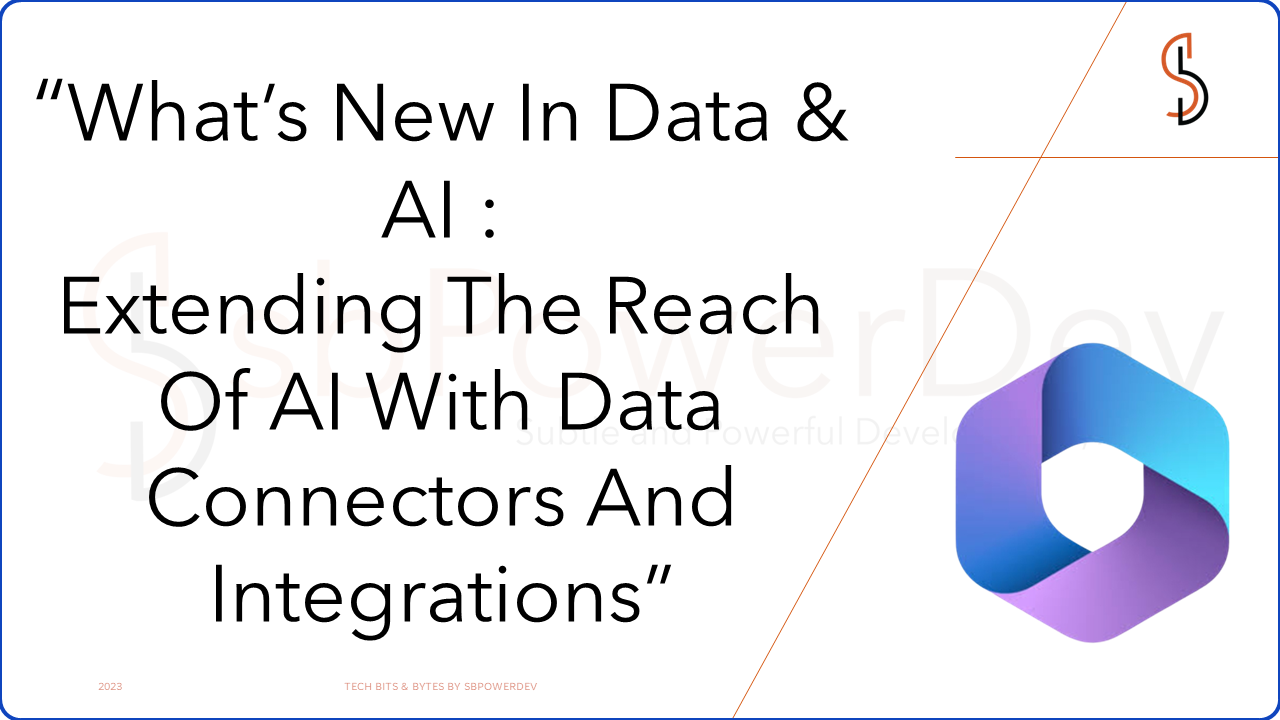In the ever-evolving landscape of artificial intelligence (AI) and data analytics, staying up to date with the latest advancements is crucial. One of the most exciting developments in recent times is the expansion of AI’s capabilities through data connectors and integrations. This article explores the significance of this trend and how it is extending the reach of AI across various industries.
The Power of Data Integration
Data integration is the process of combining data from different sources to provide a unified view for analysis and decision-making. Traditionally, AI systems relied on structured data within their own ecosystems. However, the world of data is vast and diverse, containing information in various formats, from structured databases to unstructured text, images, and more. This is where data connectors and integrations come into play.

Breaking Down Data Silos
One of the key challenges in AI has been dealing with data silos. Organisations often have data scattered across multiple platforms, making it difficult for AI systems to access and leverage this information effectively. Data connectors bridge these gaps by creating seamless connections between disparate data sources. Whether it’s integrating data from on-premises databases, cloud services, or third-party applications, connectors enable AI systems to access a broader range of information.
Expanding Data Horizons
AI algorithms thrive on data diversity. The more diverse the data, the more accurate and insightful the AI models become. Data connectors enable AI systems to tap into new sources of data, such as social media feeds, IoT devices, and external APIs. This expanded data horizon allows AI to better understand and predict real-world scenarios, from customer behaviour to market trends.
Real-time Data Access
In today’s fast-paced world, real-time data is invaluable. Data connectors facilitate real-time data streaming, ensuring that AI systems are working with the most current information. This is particularly crucial in applications like fraud detection, where immediate action is needed, or in supply chain optimisation, where decisions depend on real-time data from sensors and monitoring devices.

Enhanced Decision-Making
Data connectors not only enable AI systems to access more data but also make it easier to integrate AI-driven insights into decision-making processes. For example, business intelligence tools can seamlessly incorporate AI-generated predictions, helping organisations make data-driven decisions with greater confidence.
Improved User Experiences
Integrating AI with data connectors can significantly enhance user experiences. For instance, chatbots and virtual assistants can provide more relevant and personalised responses by accessing a wider range of user data from different sources. This leads to higher customer satisfaction and engagement.
Challenges and Considerations
While the integration of AI with data connectors offers tremendous potential, it also comes with challenges. Data security, privacy, and compliance must be carefully addressed when accessing and sharing data from various sources. Additionally, ensuring data quality and consistency across different integrations is vital for the accuracy of AI models.
In conclusion, the integration of data connectors and AI is ushering in a new era of possibilities. Businesses and industries are no longer limited by the data within their immediate reach; they can harness the power of diverse and real-time data to make more informed decisions, deliver better user experiences, and gain a competitive edge. However, it’s essential to approach these integrations with a thoughtful strategy, emphasising data governance and security to fully unlock the potential of AI in the age of data connectivity.















